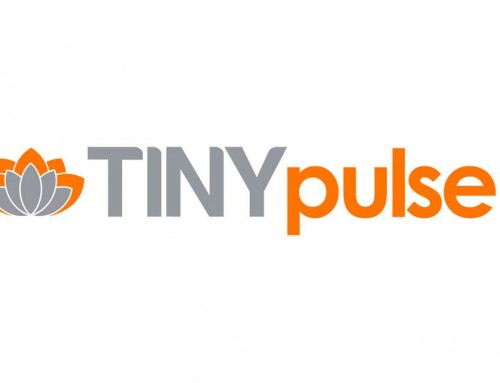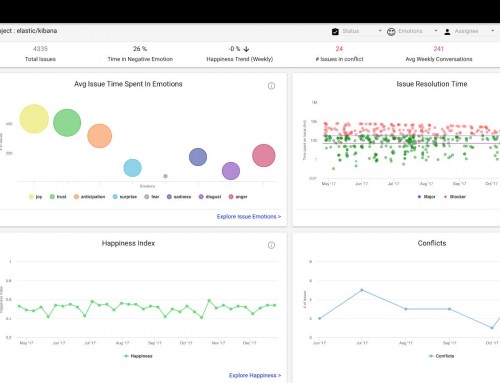Happiness Hacking 2 – 30 Happiness Strategies To Try in the Workplace
Strategies For Team Happiness
You boost team happiness by giveing people a smile and by showing them your appreciation and recognition. Try to stay off from generic emails or general praise cards. They will cheapen the gesture and feel more like an obligation than proper recognition. There are several approaches and strategies to support and achieve people happiness at the workplace level.
As a Management 3.0 facilitator, I want to share with you strategies to use right in the workplace. However, be aware, the following strategies are mere commendations only. It is up to you to find out which and how they match your workplace needs.
In some way, the following listed strategies may look, like social "fluffy stuff" at the first glance. It is precisely for this reason that, they may foster team and corporate cohesion.
Even if it may be hard at the first step to install them on the shop floor – eventually you will gain profit and benefit from them.
Cultural Happiness Strategies
- The Japanese forest-bathing, shinrin-yoku (森林浴) means "taking in the forest atmosphere" and Norwegian friluftsliv for example, involve the art of returning to nature to breathe in the goodness and make contact with the great outdoors.
- The German ideal of gemütlichkeit is about celebrating togetherness – sometimes with beer and/or a song.
- The Spanish siesta will already be familiar with most and is already encouraged in some workplaces.
- The Swedish fika, Argentine, and Bosnian kafa are tea- or coffee-drinking rituals, respectively. In common, they are gentle moments with friends (or colleagues) to slow down, catch your breath, discuss the day’s affairs, and strengthen your friendship.
- The Turkish art of keyif is more of an individual affair. Each person must find their own keyif moment: a few minutes alone in a special place to relax and engage with your surroundings.
- Nigerian ubuntu is the philosophy of being stronger as an individual by prioritizing the group. You get what you give: making decisions of all sizes based on the benefit or otherwise for other members of the community will contribute to the general happiness and well-being of your team.
Workplace Related Strategies
- Remind people your company’s mission and values. – now and then it’s important that you emphasize, what your company stands for. People need to be reminded of why they are doing what they’re doing.
- Assign company values to people. – Assign every month one of your company’s values to a certain employee, based on a peer-voting process. Ask the employee to live the value for the month and make a guessing game for the others which value it might be. Make brown-bag lunches for the value of the month picked.
- Have teams create their own set of values. – Designing your own game rules makes playing a lot more fun. Team synergy is not an easy objective to attain, and it’s definitely not a rapid one. Getting teams to create a team culture, based on 2-3 commonly agreed values or ground rules can help nurture and speed up that process. Team Charter Canvas developed by me is a suitable tool to help team building their own team values, norms, and rules.
- Assign a buddy/mentor for every newcomer. – Make the onboarding process smooth and pleasant. Newbies have always important questions. And sometimes you can learn a lot from them. Let a smart person chaperon the newcomer. Building a trustworthy relationship right at the beginning speeds up integration. This way the newcomer can better adapt and grow part of the team.
- Have themed office days. – Pick a motto for a certain day. Ask your employees to dress accordingly, to bring matching objects or persons. This initiative can bring a lot of fun and increase employee loyalty.
Warning: Use this only for the more open-minded companies and departments with less customer contact. - Get social. – Go out, have fun, have teambuilding and weekend competitions! It can be really overwhelming to work, work, work 8-12h a day and crave a weekend that passes in a blink of an eye. Join sports competitions and encourage team playing activities. Support competitions between teams or departments along your company.
- Have team photos. – Have photos of your team on a wall, or frame them around the office. It’s a cultural element that can encourage and foster work relationships and employee engagement.
- Encourage charity. – Look for charity opportunities in your city or community you can support as a company on a continuous base: funding a kindergarten or a rest home, helping at a village fair.
- Encourage volunteering. – Give your employees a couple of days a month to volunteer for a cause they support.
- Encourage personal projects. – Give employees a 1-2 h/ day window to pursue their own projects. Having people from different departments connecting creates a great sense of corporate cohesion. Besides, it sparks innovation and maybe new products could be launched. Do you remember Googles 10%-Rule?
- Recognition in front of peers. – Highlight your employees’ achievements by recognizing them in a company meeting, newsletter or on your company Intranet site.
- Give and receive feedback. – Keep giving feedback simple. Offer a framework or a system to give feedback that employees can use with confidence and honesty. Let them know you value their opinion and, most importantly, act on that feedback.
- Celebrate achievements. – Everyone likes a lauding tap on her shoulder. And it is irrelevant if the superior manager or a peer gives this appreciation. This is also a great way to glue together teams. Use appreciation cards, Gruffalo challenge cups, kudo boxes or kudo walls to show your appreciation public.
- Celebrate people. – Birthdays, promotions, retirements, newcomers welcoming, there are plenty of important moments where people can be put at the front of the company. They make the company and it’s a great and relaxing way of showing them that they matter.
- Celebrate failures. – Not only achievements and success should be celebrated. Celebrate failures as well. You create a positive failure culture at your company and engage people to experiment by accepting failure as constant opportunities to learn. Celebrate each newly given opportunity.
- Make sure that people have all the resources and autonomy they need. – This doesn't sound like other typical employee engagement ideas but it has an important purpose. Even you follow all the tips in this article, the easiest way to spoil all your best attempts to engage and empower people is to restrain your people.
The 3 most efficient factors to kill employees engagement and motivation: (a) over-elaborated business governance processes like over-stressed internet policies, e.g. force them to use browser XYZ only; (b) over-emphasized user account registration processes; and the worst of all, (c) limit them by forcing them to use archaic, out-of-date hardware and software equipment. - Swap jobs for a day. – Maybe not for all responsibilities, but enough to make it fun. Your employees have a good time and get some perspective on what other people in the company do every day.
- Encourage cross-hierarchical knowledge transfer. – Support people to run Open Space Technology, Lean Coffees, or Brown-Bag Lunch Lectures to spread knowledge and information through the company.
- Create Communities of Practices. – Challenge people to work together beyond department boundaries, hierarchies, and roles.
Friendly Working Environment
- Playing games. – The best to revitalize the body and to relax the brain cells is playing games. Use serious games in facilitation workshops, as icebreakers, and in breaks in between.
- A room only for fun. – The workplace is work. Period. But wouldn’t your work environment be happier if you would have a room only for entertainment purposes? A room full of games where you could leave the stress behind?
- Breaks and meetings out. – What's about short going-out-for-some-air breaks? Leave your company meetings routine and schedule meetings as discussion-by-walking. And for yourself, give you the perfect time in the plains to have a moment just for yourself in which you can analyze your daily problems.
- Great indoor design. – White walls and uncomfortable chairs aren’t the greatest amplifiers for creativity. Ok, it is unusual that one of the most famous modern architects or designers like Norman Foster, Frank Gehry, or Zaha Hadid,
The Most Important Advice:
All the ideas and tip lusted above are useless, if their implementation will show they are fakes. That they are not integrals parts of the existing culture. That management and employee don not live them.
Thus, if you are working in an already "crazy" company, dig right into the material. If your people have to be acquainted to it, take your time, start slowly, and raise the bar suddenly.
Further Reading
- Ryan Bridges: Ten Real-world Happiness Strategies To Try in the Workplace. Happy Melly, Aug. 2017.
- Emma Seppala: Positive Teams Are More Productive. Harvard Business Review, Mar 18, 2015.
- Jonha Revesencio: Why Happy Employees Are 12% More Productive. FastCompany, Jul 22, 2015.
- David Tomas: A Strategy For Measuring Employee Happiness (And Acting On The Result). Forbes, Jun 2015.
- Paula Clapon: 25 Employee Engagement Ideas. hppy.com
- Paula Clapon: 25 little things that make you happy at work. hppy.com
- Shana Lebowitz: 7 Small Changes to Your Daily Routine That Can Improve Your Mood, Productivity and Health, Inc.com, Dec 5, 2017.
- Jessica Stillman: How to Be Happy at Work: Have These 3 Things, Inc.com, Oct 23, 2017.
- Jeff Haden: Want to Be Much Happier? Science Says Always Do Any 1 of These 8 Things, Inc.com, Aug 14, 2017.









Leave A Comment